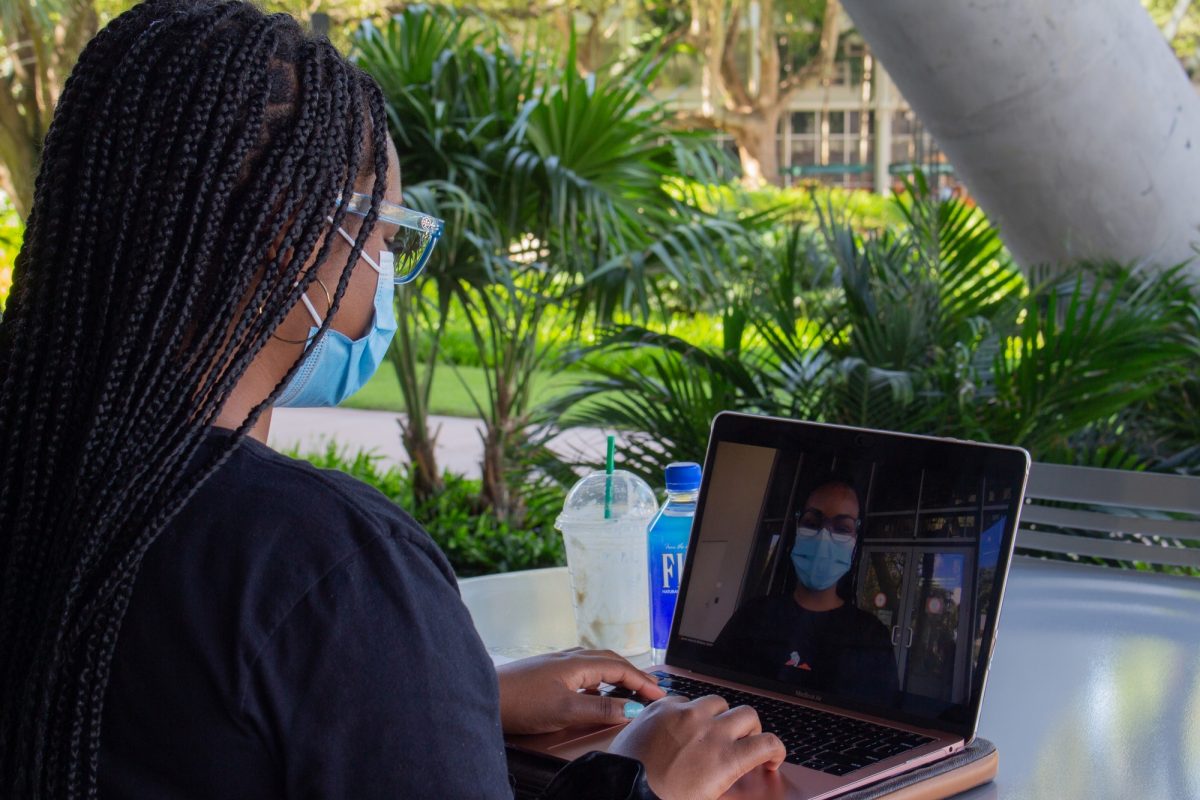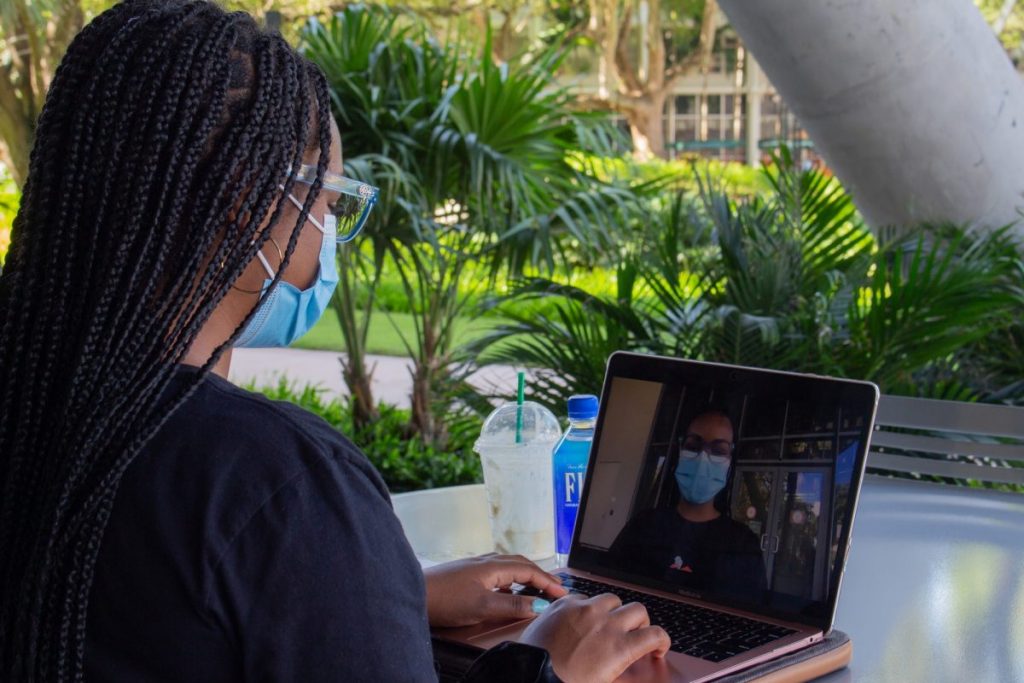

The University of Miami provided several modes of teaching during its reopening in the fall: hybrid, remote learning/virtual, and in-person teaching. Students were able to select their learning option and whether they would be classified as a remote or on-campus student for the duration of the semester.
Freshman Nyayaongah Gony did not like the hybrid learning model. With this specific option, a certain number of students would come to class on a specific day while the rest of the class stayed back and attended the class online. This aim was targeted to reduce the capacity of students in a room to enable adequate social distancing.
“Having to remember whether I was in person one day or online started getting very tedious,” said Gony, a communications major. She also said she faced a lot of distractions with remote learning.
“I was more tempted to zone out or go get something to eat while in class,” Gony said.
“Whether Zoom fatigue, election fatigue, protest fatigue, or vicarious trauma related to illness and death due to the coronavirus or the virus of racism, we are tired,” said Laura Kohn-Wood, dean and professor of the School of Education and Human Development. “Fatigue is evident across the nation, across our community, our campus. Higher education faces critical challenges related to costs, enrollment, and the changing landscape brought on by COVID-19 related crises. We know that universities will remain relevant to the extent that they can also improve student experiences, innovate the dissemination of knowledge.”
Many students also opted to be remote learners entirely and not attend classes in person on campus. Kaylin Baer, a junior in the Miami Herbert Business School, said she thinks the student body lost a sense of unity and compassion for one another because students were constantly isolating themselves.
“Remote learning felt like isolation,” said Baer. “I’m a very hands-on person, and online learning was very motivating or engaging at all.”
Matt DiRico, a junior finance major, says students are not getting the best learning experience in remote classes because some professors are not comfortable with online instruction.
“Some professors have been willing to be more lenient with assignments, while others have been very inconsistent in their treatment toward students,” DiRico said.
Isaiah Cashwell, a junior health science major, said this semester was easily his hardest. Cashwell said that the grades he has received are not a good representation of him as a student.
“This is not an easy time for students, working through school during this pandemic,” Cashwell said. “It would help if professors showed they care and worked to better understand the students individually.”
Cashwell, 20, said he believes that the professors aren’t thinking about each student and how this pandemic is affecting them mentally and emotionally. He said that a lot of the homework and quizzes that he did was nothing but busy work and is pointless to him.
Faculty also expressed their views on the in-person, traditional model in the midst of a pandemic. Edward Julbe, a senior lecturer in the School of Communication, said that teachers are more productive in an in-person setting.
“Teaching the classes I teach, which are so hands-on in nature, in-person instruction is a much more effective means of covering the material,” said Julbe, who teaches courses in mobile journalism, television production and broadcasting.
“Considering we’ve never had to do anything like this before, I think the semester went as well as it could go,” said Julbe, who joined the university in 2008. “I was pleasantly surprised that we were able to complete the in-person classes.”
John Quelch, the dean of the Patti and Allan Herbert Business School, said despite the hurdles the university community was able to overcome and eventually adjust to the new normal.
“The University of Miami community showed its characteristic grit and resilience,” said Quelch. “Thanks to all our faculty, staff and students for adapting with determination and good humor.”
Brianna Jackson, Max Jenkins, Nicholas Tobin, Jarius Howard, and Samuel Gonzalez contributed to this reporting.






